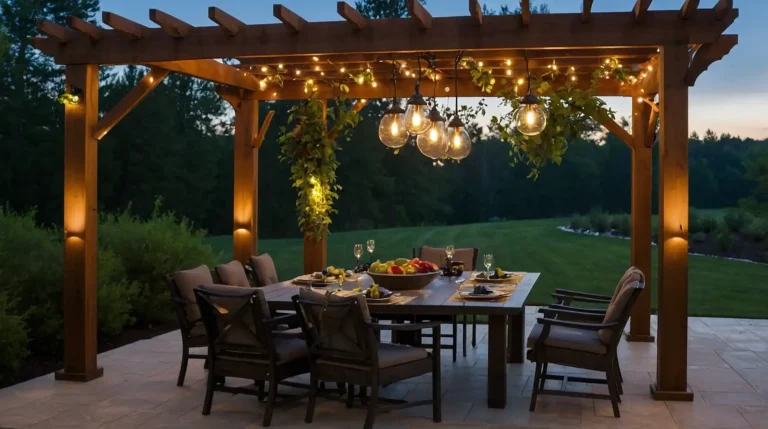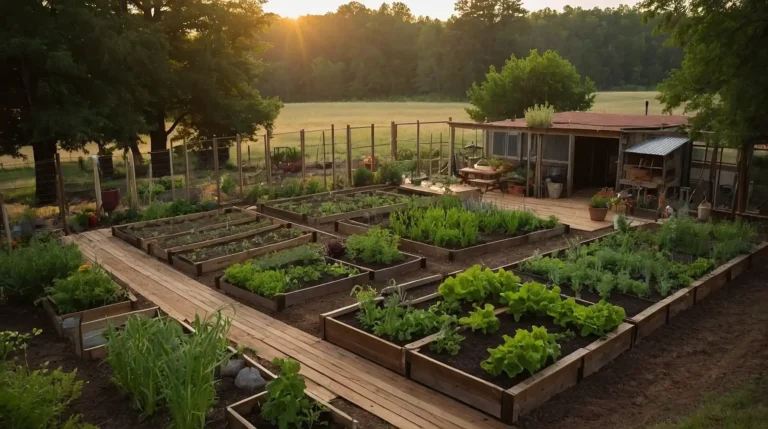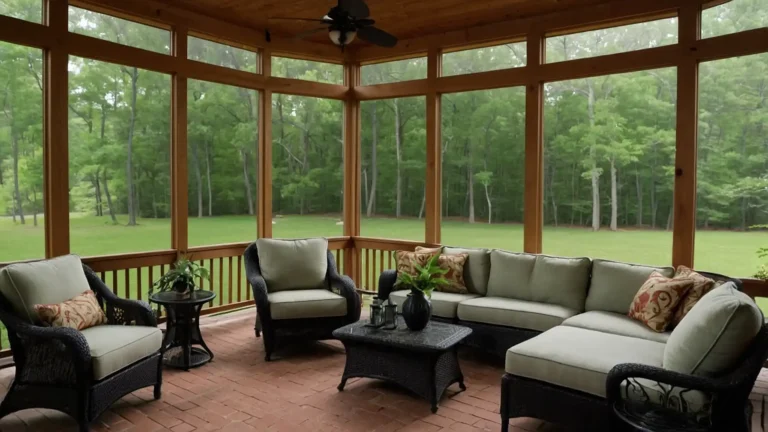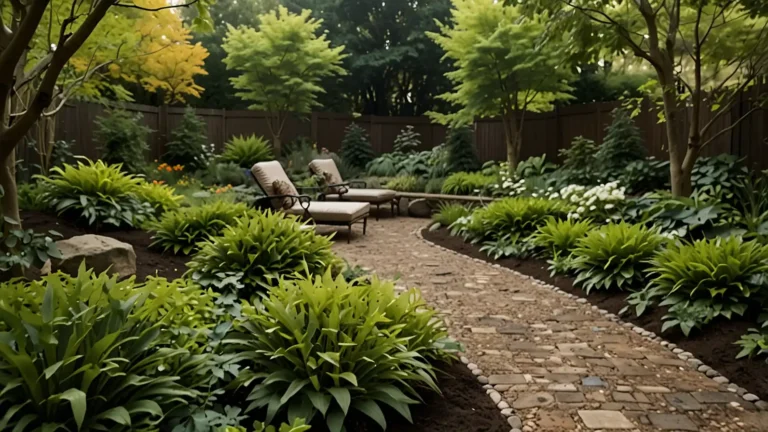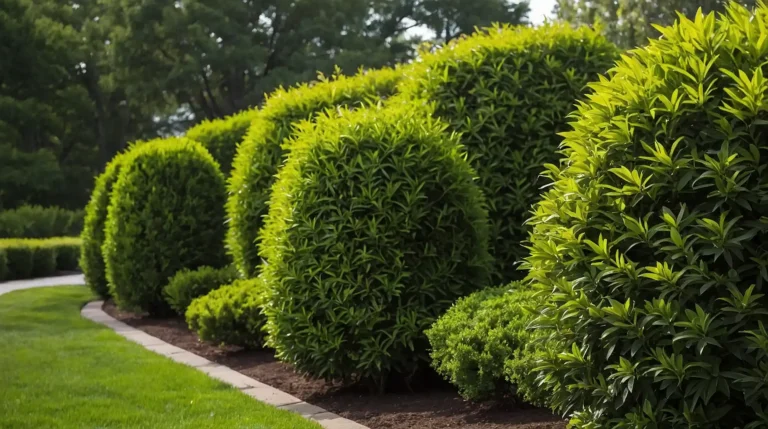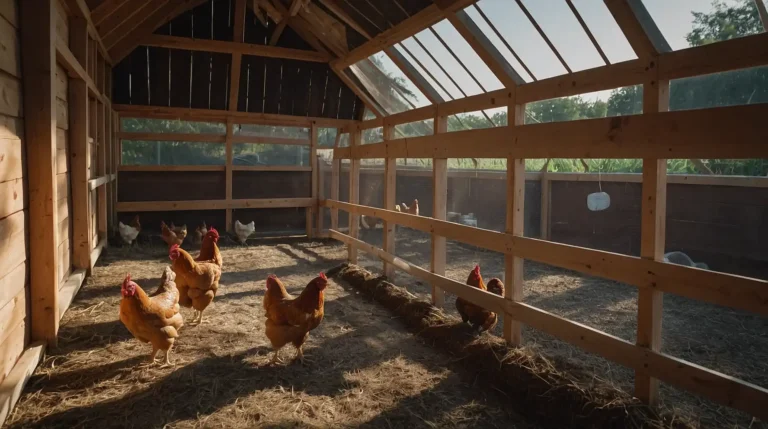25 River Rock Landscaping Ideas
Transform your outdoor space with versatile river rocks that add natural beauty and practical function.
These smooth stones create stunning landscapes while solving common yard challenges.
From drainage solutions to decorative accents, river rocks work in every garden style. You’ll discover budget-friendly ways to enhance curb appeal significantly.
These creative ideas help you design low-maintenance landscapes that look professionally installed.
Let’s explore ways to incorporate river rocks into your outdoor sanctuary beautifully.
1: Create Natural Pathway Borders

Line garden pathways with river rocks to define walking areas and prevent soil erosion. Choose uniform sizes for clean, professional appearance throughout your landscape.
Install landscape edging to keep rocks in place over time. This prevents rocks from migrating into lawn areas during heavy rains.
You’ll achieve clear pathway definition while adding natural texture to your garden design. River rock borders require minimal maintenance and last for decades.
2: Design a Dry Creek Bed

Build a meandering dry creek using river rocks to manage water runoff and add visual interest. Vary rock sizes from large boulders to small pebbles.
Place larger rocks along the edges and smaller ones in the center. Add native plants along the banks for authentic creek bed appearance.
You’ll solve drainage problems while creating beautiful landscape features that look completely natural. Dry creek beds work especially well on sloped properties.
3: Install River Rock Mulch Areas

Replace traditional mulch with river rocks around trees and shrubs for permanent ground cover. Choose neutral colors that complement your existing landscape palette.
Install landscape fabric underneath to prevent weeds while allowing water penetration. This creates low-maintenance planting beds that never need refreshing.
You’ll eliminate annual mulch replacement while creating clean, polished garden appearances. River rock mulch works especially well in desert and contemporary landscapes.
4: Build a Zen Garden Meditation Space

Create a peaceful meditation area using raked river rocks and strategically placed boulders. Include a simple bench or stepping stones for access.
Add one or two specimen plants like ornamental grass or small trees. Keep the design minimal for maximum tranquil impact and visual serenity.
You’ll establish a calming retreat that requires minimal maintenance while providing maximum relaxation benefits. Zen gardens work well in small or large spaces.
5: Construct a River Rock Fire Pit

Build a fire pit using large river rocks as the foundation and smaller rocks for decorative accents. Choose heat-resistant stones for safety and durability.
Surround the fire pit with additional river rocks to define the seating area. Add comfortable outdoor furniture for complete gathering space functionality.
You’ll create a natural-looking fire feature that blends seamlessly with your landscape design. River rock fire pits cost less than manufactured alternatives.
6: Design Decorative Garden Borders

Edge flower beds and garden areas with river rocks to create clean separation between planted and lawn areas. Choose rocks sized appropriately for your garden scale.
Layer rocks of different sizes for natural, organic appearance rather than uniform lines. This prevents the border from looking artificially rigid or constructed.
You’ll define garden spaces while preventing grass invasion into planted areas effectively. River rock borders adapt to curved or straight garden designs easily.
7: Create a Water Feature Foundation

Use river rocks as the base for fountains, ponds, or waterfall features. The smooth stones create natural-looking water elements that enhance any landscape.
Arrange rocks to direct water flow and create pleasant sounds. Include aquatic plants among the rocks for living ecosystem benefits and visual appeal.
You’ll achieve professional water feature results while using affordable natural materials. River rocks help maintain water clarity by providing beneficial bacteria surfaces.
8: Install Drainage Solutions

Place river rocks in low-lying areas where water pools to improve drainage and prevent erosion. Large rocks allow water to flow while small rocks filter sediment.
Create French drains using perforated pipes surrounded by river rocks. This invisible drainage system prevents water damage while maintaining attractive landscapes.
You’ll solve water problems naturally while enhancing your property’s appearance and functionality. River rock drainage solutions work better than many artificial alternatives.
9: Build Raised Garden Bed Walls

Stack larger river rocks to create attractive retaining walls for raised garden beds. Choose flat rocks that stack securely without mortar requirements.
Fill beds with quality soil and plant with your favorite flowers or vegetables. The natural stone walls complement any plant choices beautifully.
You’ll create elevated planting areas while adding architectural interest to flat landscapes. River rock walls cost less than brick or manufactured alternatives.
10: Design Ground Cover Patterns

Arrange river rocks in artistic patterns or geometric designs for unique ground cover solutions. Mix different colors and sizes for visual interest and texture.
Create flowing curves or structured grids depending on your landscape style preferences. Include spaces for drought-tolerant plants to soften the hardscape elements.
You’ll achieve artistic landscape focal points that require zero maintenance once installed properly. Rock patterns work especially well in contemporary garden designs.
11: Construct Natural Steps

Build outdoor stairs using flat river rocks for treads and smaller rocks for support. Choose rocks with relatively flat surfaces for safe, stable walking.
Secure rocks with landscape adhesive or mortar for permanent installation. Add lighting along the sides for safe nighttime navigation and dramatic effect.
You’ll create natural-looking steps that blend seamlessly with your landscape design. River rock steps cost significantly less than manufactured stone alternatives.
12: Create Plant-Free Zones

Establish maintenance-free areas using river rocks where plants struggle to grow successfully. These spaces work well under trees or in challenging microclimates.
Choose rock colors that complement your home’s exterior and existing landscape elements. Add occasional large boulders as sculptural focal points for visual interest.
You’ll eliminate problem planting areas while maintaining attractive ground cover throughout difficult landscape zones. Rock gardens require virtually no ongoing maintenance.
13: Build Decorative Tree Rings

Surround trees with river rock rings to protect roots from mower damage and eliminate grass competition. Size rings proportionally to tree canopy spread.
Layer rocks from large to small as you move away from the trunk. This creates natural-looking transitions while providing practical root protection benefits.
You’ll protect valuable trees while creating attractive landscape features that highlight specimen plantings. Tree rings prevent soil compaction around sensitive root systems.
14: Design Accent Walls

Create vertical garden walls using river rocks held in place by wire mesh or gabion baskets. These structures add height and interest to flat landscapes.
Include pockets for drought-tolerant plants that thrive in rocky conditions. The combination of stone and living plants creates dynamic vertical garden displays.
You’ll add architectural elements while using natural materials that age beautifully over time. Rock walls provide privacy and sound barriers effectively.
15: Install Playground Surfaces

Use small, rounded river rocks as safe playground surfacing under swings and climbing equipment. Choose appropriate sizes that provide cushioning without creating hazards.
Install proper depth recommendations for safety standards and include drainage systems. This creates natural-looking play areas that blend with landscape designs.
You’ll provide safe play surfaces while maintaining attractive yard appearances throughout family recreational areas. River rock surfacing drains well and resists pests.
16: Create Sculptural Garden Art

Arrange river rocks into artistic sculptures or cairns for unique garden focal points. Stack rocks in balanced compositions that create visual interest.
Vary sizes and colors to create dynamic arrangements that change with viewing angles. Include lighting to highlight sculptural elements during evening hours.
You’ll add personal artistic expression while using natural materials that weather beautifully over time. Rock sculptures cost nothing while providing maximum artistic impact.
17: Build Rain Gardens

Construct rain gardens using river rocks to filter stormwater runoff naturally. Large rocks slow water flow while small rocks provide filtration benefits.
Plant rain gardens with native species that tolerate both wet and dry conditions. The combination manages water while creating beautiful landscape features.
You’ll solve drainage problems while supporting local ecosystems and reducing environmental impact significantly. Rain gardens qualify for some municipal rebate programs.
18: Design Container Garden Bases

Fill large containers with river rocks before adding soil for improved drainage in potted plants. This prevents root rot while reducing container weight.
Choose rocks sized appropriately for container drainage holes to prevent soil loss. Layer rocks to create stable foundations for heavy container plantings.
You’ll improve container garden success while reducing soil requirements and overall planting costs. Rock bases extend container life by preventing water damage.
19: Create Transition Zones

Use river rocks to create smooth transitions between different landscape materials like grass, gravel, or paved areas. This prevents erosion while providing visual continuity.
Graduate rock sizes from large to small to create natural-looking boundaries. Include occasional plants to soften transitions and add living elements.
You’ll solve common landscape problem areas while creating professional-looking design solutions. Transition zones prevent material migration and maintenance problems.
20: Install Decorative Dry Wells

Build attractive dry wells using river rocks to manage roof runoff from downspouts. Create functional features that also serve as landscape focal points.
Design wells with varying rock sizes for both function and visual appeal. Add native plants around wells for natural integration with existing landscapes.
You’ll manage water runoff effectively while creating attractive alternatives to unsightly drainage solutions. Decorative dry wells add value while solving problems.
21: Design Rock Stream Beds

Create the illusion of flowing water using river rocks arranged in meandering stream patterns. Vary rock colors to suggest water depth and movement.
Include larger boulders as natural dams and smaller rocks as flowing water areas. Add bridge elements or stepping stones for interactive landscape features.
You’ll achieve water feature beauty without maintenance requirements or safety concerns of actual streams. Rock streams work well in drought-prone areas.
22: Build Natural Seating Areas

Arrange large, flat river rocks as natural benches and seating elements throughout your landscape. Choose rocks with comfortable surfaces and appropriate heights.
Create conversation areas by positioning multiple seating rocks around fire pits or focal points. Add cushions for comfort during extended outdoor relaxation periods.
You’ll provide permanent seating that requires no maintenance while blending naturally with landscape designs. Rock seating costs nothing while lasting indefinitely.
23: Create Erosion Control Solutions

Install river rocks on slopes and hillsides to prevent soil erosion during heavy rains. Large rocks slow water flow while small rocks provide ground cover.
Combine rocks with erosion control plants for maximum slope stabilization benefits. This creates attractive solutions to common landscape problem areas.
You’ll solve erosion problems naturally while avoiding expensive retaining walls or artificial solutions. Rock erosion control works immediately and improves over time.
24: Design Decorative Drainage Ditches

Transform utilitarian drainage ditches into attractive landscape features using river rocks. Create natural-looking channels that handle water while enhancing property appearance.
Line ditches with landscape fabric before adding rocks to prevent weed growth. Include native plants along edges for natural integration with surrounding landscapes.
You’ll solve required drainage needs while creating features that add value rather than detract from property appearance. Attractive ditches prevent neighborhood complaints.
25: Build Memorial Gardens

Create peaceful memorial spaces using river rocks arranged in meaningful patterns or circles. Include plants and seating for quiet reflection and remembrance.
Choose rocks with special significance or beautiful natural patterns for personal meaning. Add plaques or markers integrated naturally within the rock arrangements.
You’ll establish lasting tributes that require minimal maintenance while providing peaceful spaces for contemplation. Memorial gardens become cherished family gathering places.
Conclusion
Your river rock landscaping projects transform outdoor spaces into beautiful, low-maintenance sanctuaries that enhance property value.
These natural solutions provide lasting beauty and functionality.


